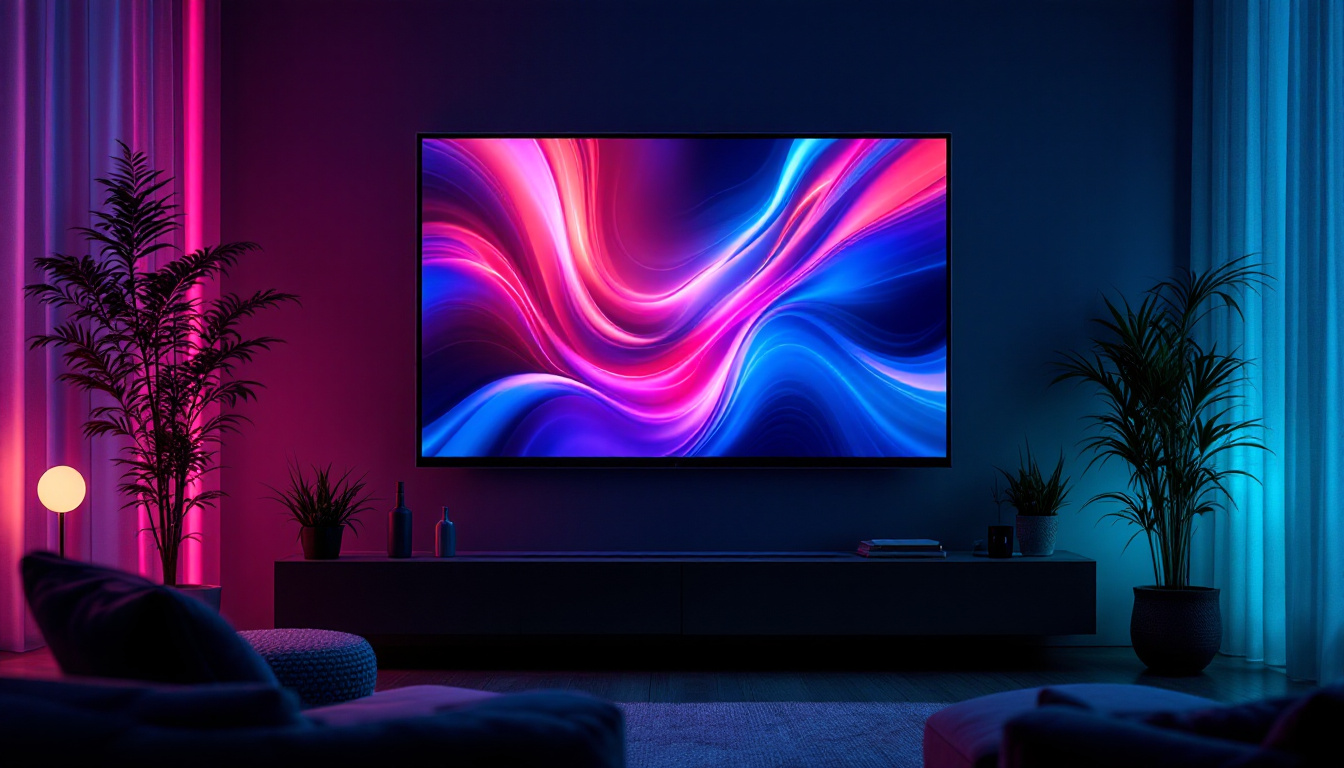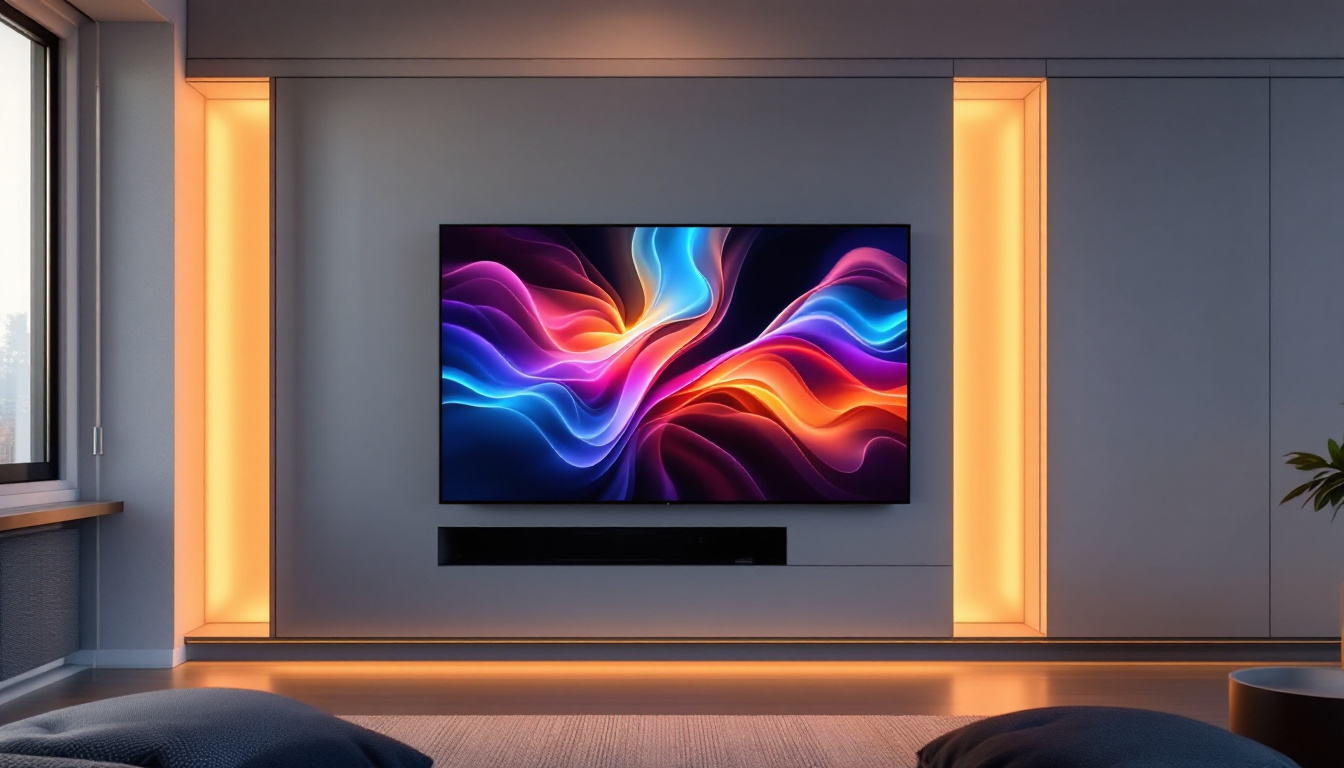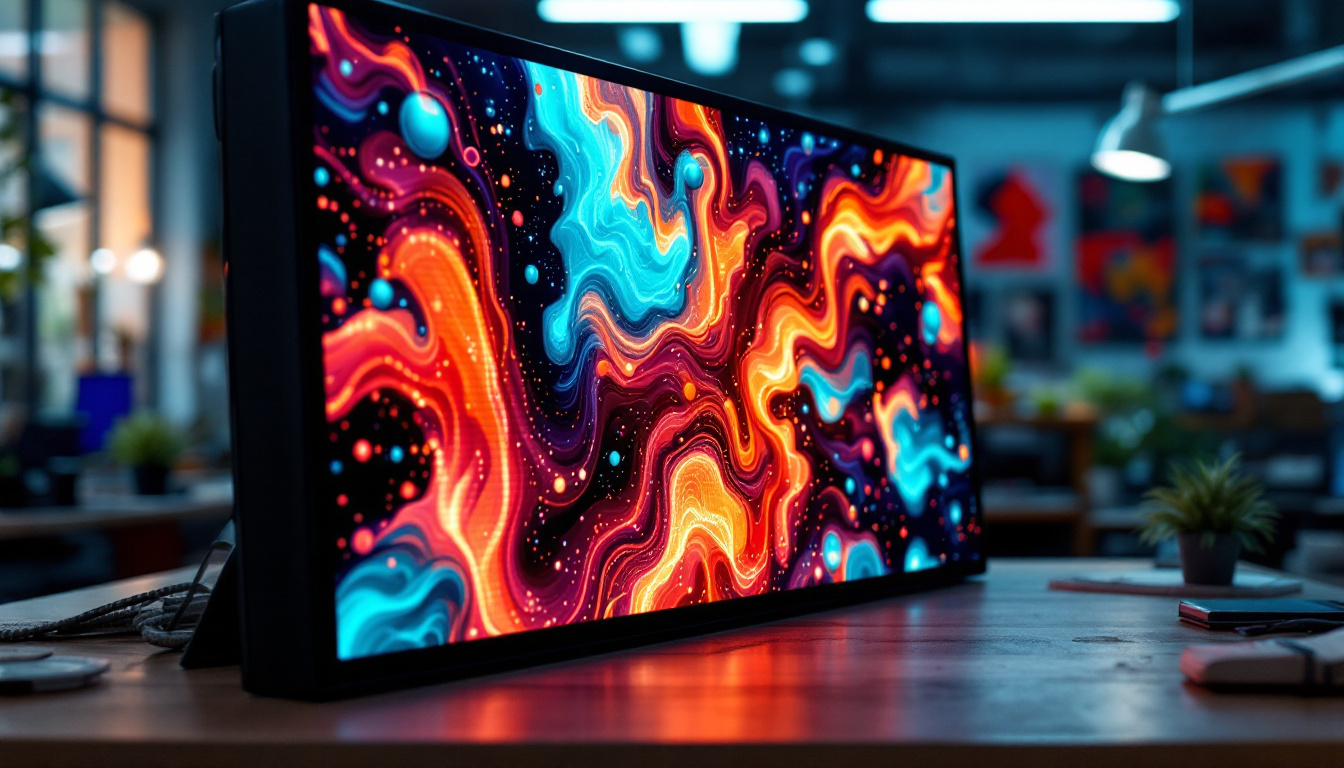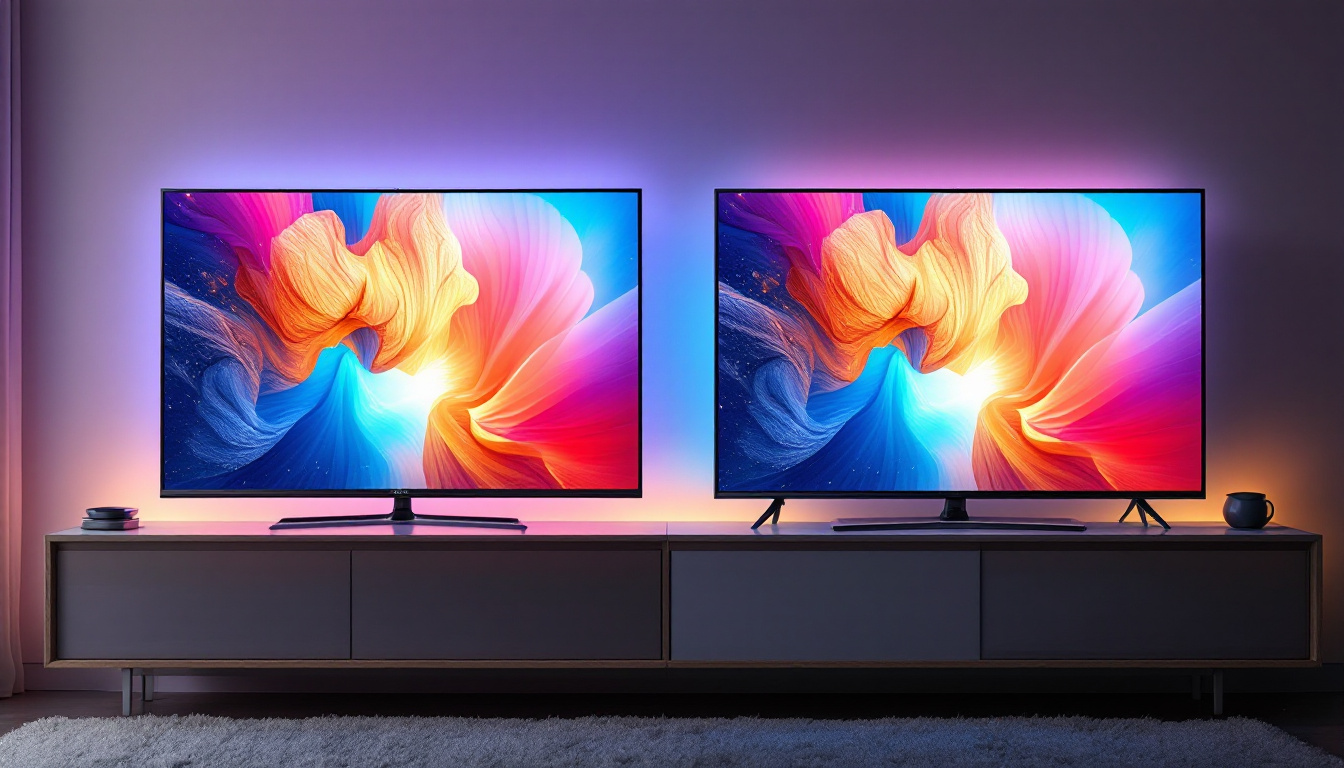In the realm of modern technology, the display is one of the most critical components of any electronic device. Among the various types of displays available, LED LCD monitors have gained immense popularity due to their superior performance and visual quality. This article aims to delve into the intricacies of LED LCD monitors, exploring their technology, advantages, and applications.
Understanding LED LCD Technology
LED LCD monitors combine two significant technologies: Liquid Crystal Display (LCD) and Light Emitting Diode (LED) backlighting. To appreciate how these monitors function, it is essential to understand the role of each component.
The Role of LCD
Liquid Crystal Displays (LCDs) are flat-panel displays that utilize liquid crystals to modulate light. The liquid crystals themselves do not emit light but instead manipulate the light that passes through them. This technology has been around for decades and is known for its ability to produce sharp images and vibrant colors.
In an LCD monitor, the liquid crystals are sandwiched between two layers of glass. When an electric current is applied, the crystals align in such a way that they allow varying amounts of light to pass through, creating images. However, since LCDs do not produce their own light, they require a backlight to illuminate the display. This reliance on backlighting is crucial, as it directly impacts the monitor’s brightness and overall visual performance. The advancements in LCD technology have also led to features such as faster response times and improved viewing angles, making them suitable for a variety of applications, from gaming to professional graphic design.
LED Backlighting Explained
LED backlighting is where the technology truly shines. Unlike traditional LCD monitors that use fluorescent lamps for backlighting, LED LCD monitors utilize light-emitting diodes. This shift has brought about several advantages, including improved energy efficiency, thinner designs, and better color accuracy.
There are two primary types of LED backlighting: edge-lit and full-array. Edge-lit LED monitors have LEDs positioned along the edges of the screen, while full-array monitors have a grid of LEDs behind the entire display. Full-array backlighting typically offers better contrast and uniformity, making it a preferred choice for high-end displays. Additionally, many full-array LED monitors incorporate local dimming technology, which allows specific zones of the backlight to be dimmed or turned off entirely, enhancing the contrast ratio and providing deeper blacks in darker scenes. This feature is particularly beneficial for watching movies or playing video games, where visual depth and detail are paramount.
Advantages of LED LCD Monitors
LED LCD monitors offer a myriad of advantages over traditional LCDs and other display technologies. Understanding these benefits can help consumers make informed choices when selecting a monitor.
Enhanced Picture Quality
One of the most significant advantages of LED LCD monitors is their enhanced picture quality. The use of LED backlighting allows for brighter displays with better contrast ratios. This means deeper blacks and more vivid colors, enhancing the overall viewing experience.
Additionally, many LED LCD monitors come equipped with advanced technologies such as local dimming, which further improves contrast by dimming specific areas of the screen while keeping others bright. This feature is particularly beneficial for watching movies or playing video games, where detail in dark scenes is crucial.
Energy Efficiency
Energy efficiency is another compelling reason to consider LED LCD monitors. The LED technology consumes significantly less power compared to traditional fluorescent backlighting. This not only reduces electricity bills but also contributes to a lower carbon footprint, making LED LCD monitors an environmentally friendly choice.
Many manufacturers also design their monitors with energy-saving features, such as automatic brightness adjustment based on ambient light conditions. These innovations further enhance energy efficiency, making LED LCD monitors a practical option for both home and office use.
Thin and Lightweight Designs
With the advent of LED technology, manufacturers have been able to produce thinner and lighter monitors. This is particularly advantageous for consumers who prioritize aesthetics and space-saving designs. LED LCD monitors can easily fit into modern workspaces without compromising on screen size or quality.
The slim profile also allows for more versatile mounting options, including wall mounts and adjustable stands. This flexibility makes it easier to create an ergonomic workspace tailored to individual preferences.
Applications of LED LCD Monitors
LED LCD monitors have a wide array of applications across various fields. Their versatility makes them suitable for different environments, from home entertainment systems to professional workstations.
Home Entertainment
In the realm of home entertainment, LED LCD monitors are a popular choice for televisions and gaming displays. Their ability to produce vibrant colors and deep contrasts enhances the viewing experience, making them ideal for movies, sports, and gaming.
Moreover, many LED LCD monitors offer features such as high refresh rates and low input lag, which are essential for gamers seeking a competitive edge. The combination of these features ensures that players can enjoy smooth and immersive gameplay.
Professional Use
In professional settings, LED LCD monitors are widely used for graphic design, video editing, and data analysis. Their color accuracy and high resolution are crucial for tasks that demand precision and detail.
Many professionals also benefit from the ergonomic designs of LED LCD monitors, which can help reduce eye strain during extended use. Features such as adjustable stands and blue light filters contribute to a more comfortable working environment.
Educational Institutions
Educational Institutions have also embraced LED LCD monitors for classrooms and lecture halls. Their ability to display clear and vibrant images makes them suitable for presentations, interactive learning, and collaborative projects.
Additionally, the energy efficiency of LED LCD monitors aligns with the sustainability goals of many educational institutions, making them a responsible choice for schools and universities.
Choosing the Right LED LCD Monitor
With the myriad of options available in the market, selecting the right LED LCD monitor can be daunting. Several factors should be considered to ensure that the chosen monitor meets specific needs and preferences.
Screen Size and Resolution
The screen size and resolution are among the most critical factors to consider. Larger screens provide a more immersive experience, while higher resolutions, such as 4K, offer greater detail and clarity. It is essential to assess the intended use of the monitor and choose a size and resolution that aligns with those needs.
For gaming, a larger screen with a higher refresh rate can enhance the experience, while for professional tasks, a monitor with a high resolution can improve productivity and accuracy.
Connectivity Options
Connectivity options are another vital consideration. Modern LED LCD monitors come equipped with various ports, including HDMI, DisplayPort, and USB-C. Ensuring that the monitor has the necessary connections for devices, such as laptops, gaming consoles, and external storage, is crucial for seamless integration into existing setups.
Additionally, some monitors offer built-in speakers and USB hubs, which can further enhance functionality and reduce cable clutter.
Budget Considerations
Finally, budget considerations play a significant role in the decision-making process. LED LCD monitors are available at various price points, and it is essential to find a balance between features and affordability. While high-end models offer advanced features, there are also many mid-range options that provide excellent performance without breaking the bank.
Researching and comparing different models can help consumers identify the best value for their specific requirements.
Future Trends in LED LCD Technology
The landscape of display technology is continually evolving, and LED LCD monitors are no exception. Several trends are emerging that could shape the future of this technology.
Mini-LED and Micro-LED Innovations
One of the most exciting advancements in LED technology is the development of Mini-LED and Micro-LED displays. Mini-LED technology uses smaller LEDs for backlighting, allowing for more precise control over brightness and contrast. This results in improved picture quality and reduced blooming effects.
Micro-LED technology takes this a step further by using microscopic LEDs that can emit their own light. This could potentially lead to displays with even greater color accuracy, contrast, and efficiency. As these technologies mature, they may redefine the standards for LED LCD monitors.
Increased Focus on Sustainability
As environmental concerns continue to grow, manufacturers are increasingly focusing on sustainability in their production processes. This includes using eco-friendly materials, reducing energy consumption, and implementing recycling programs for old monitors.
Consumers are becoming more conscious of their environmental impact, and companies that prioritize sustainability may gain a competitive edge in the market.
Integration of Smart Features
Another trend is the integration of smart features into LED LCD monitors. This includes built-in streaming capabilities, voice control, and connectivity with smart home devices. As consumers seek more versatile and multifunctional devices, monitors that offer these features may become more prevalent.
Smart features can enhance the user experience, making monitors not just display devices but integral components of a connected lifestyle.
Conclusion
LED LCD monitors represent a significant advancement in display technology, combining the best of LCD and LED to deliver superior performance and versatility. With their enhanced picture quality, energy efficiency, and wide range of applications, they have become a staple in homes, offices, and educational institutions alike.
As technology continues to evolve, the future of LED LCD monitors looks promising, with innovations such as Mini-LED, Micro-LED, and smart features on the horizon. By understanding the technology behind these monitors and considering key factors when making a purchase, consumers can make informed decisions that cater to their specific needs.
In a world increasingly reliant on digital displays, investing in a quality LED LCD monitor is not just a choice; it is a step towards embracing the future of technology.
Discover LumenMatrix’s Advanced LED Display Solutions
Ready to elevate your visual experience with the latest in LED display technology? Look no further than LumenMatrix, a pioneer in crafting innovative LED displays that bring your content to life. Whether you’re in need of an Indoor LED Wall Display for your business, an Outdoor LED Wall Display for advertising, or specialized solutions like Vehicle LED Displays, LED Sports Displays, or even Custom LED Displays, LumenMatrix has the expertise to meet your needs. Embrace the future of digital displays and check out LumenMatrix LED Display Solutions today to see how we can transform your visual communication and captivate your audience.































